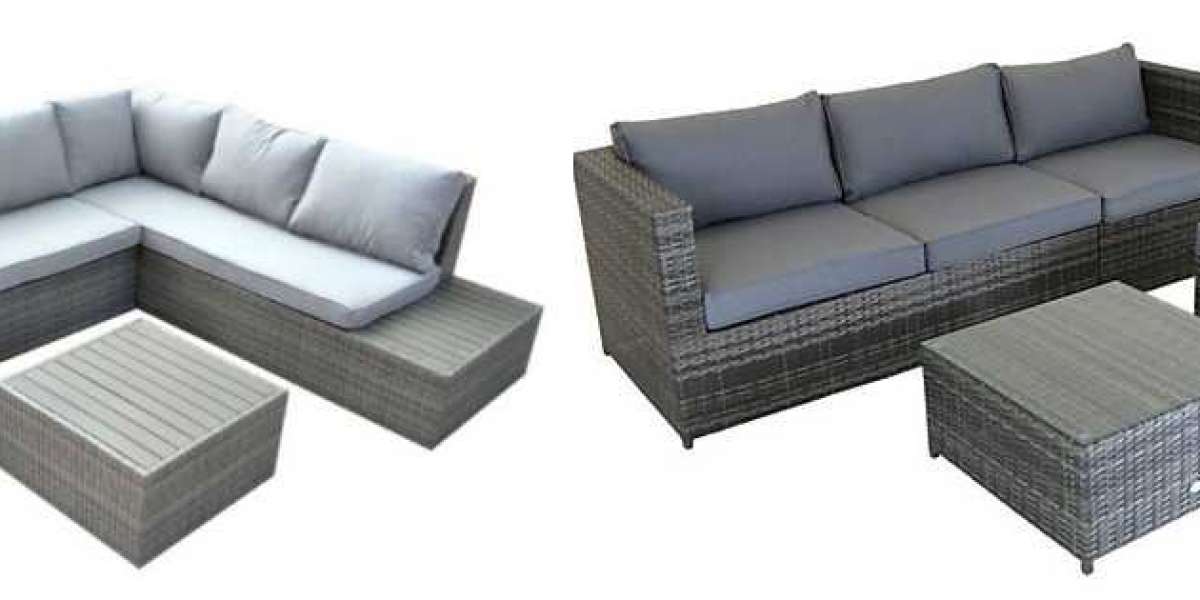At the start of every summer, we’re reminded that outdoor Rattan Lounge Set is an investment. But when those pieces have to go up against pounding rain, howling wind or beating sun, you’ll want to make sure they can withstand the elements every season. That’s the crucial characteristic of all contemporary outdoor furniture—its material makeup.
Wood
Wood has been a popular raw material for furniture for millennia. It has a natural beauty, is generally easy to work with and provides a sturdy framework for tables, chairs, benches and other furnishings. However, not all woods are created equal when it comes to outdoor usage. Many softwoods, such as pressure-treated pine, cedar and fir are inexpensive and widely used for indoor furnishings, but do not stand up well to the elements and need constant protection when not in use. Hardwoods, on the other hand, are much heartier, resist weather damage and can last decades if treated properly. On the downside, they are often more difficult to shape and are typically more expensive than softwoods. But, there are major differences between hardwoods too.
Teak Shorea
Extremely hard and durable, teak and Shorea are some of the best materials for outdoor furniture when cared for properly. These tropical hardwoods are resistant to rotting, warping, shrinkage, and swelling. If left untreated, teak and Shorea's natural golden-yellow hues will fade to a light gray patina that takes stain well. Of the two, teak tends to be more expensive.
Synthetic Resin Plastics
Another great material for modern outdoor furniture is synthetic resin because of its low-maintenance, light weight and extremely durable all-weather properties. Traditional synthetic resin outdoor furniture is typically woven in a wicker style for the classic outdoor look. This is not to be confused with natural wicker rattan, which fades when exposed to sunlight and is usually placed indoors. Synthetic resin wicker furniture can withstand the harsh conditions of the outdoors.
There are a few common synthetic materials used to make synthetic resin wicker, like nylon, polyethylene and PVC. When considering a synthetic resin piece of furniture, ensure you are getting High Density Polyethylene (HDPE) wicker. HDPE is a higher grade thermoplastic with higher strength, durability and heat endurance than PVC.
Aluminum
Aluminum is by far the most popular outdoor furniture material you’ll find (even wicker is typically woven over an aluminum frame). What’s the reason behind this allure of aluminum? Easy. It’s strong, but it’s not too heavy, not too costly, and most importantly—it won’t rust.
All of our outdoor aluminum products, such as our Bleeker counter stools, are constructed from durable aluminum that is safe for outdoor use and brushed in silver for an elevated, more stylish look. Aluminum seating looks absolutely delightful in a rustic industrial outdoor space reminiscent of an old Parisian cafe. Care: Minimal. Spray with water or a mild soapy mixture to eliminate dirt. Maintain the finish by touching up paint as needed to avoid oxidation.
These are just a few simple steps to help you find the right materials for your outdoor furniture . If followed correctly, these can help you to find the suiteable outdoor furniture materials, you can click https://www.insharefurniture.com/product/plastic-sofa-set/leisure-lounge-set.html to learn more, Insharefurniture is a safe Garden Lounge Set Manufacturer for your garden, home and office.
